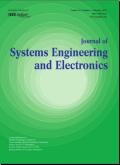云边缘环境中基于 VNF 性能-资源功能和服务需求的 SFC 安置和动态资源分配
IF 1.9
3区 计算机科学
Q3 AUTOMATION & CONTROL SYSTEMS
引用次数: 0
摘要
随着网络功能虚拟化(NFV)和软件定义网络(SDN)技术的不断发展以及网络流量的爆炸式增长,网络对计算资源的需求急剧上升。由于边缘计算资源成本高昂,如何协调云计算和边缘计算资源以提高边缘计算资源的利用效率仍是一个相当大的挑战。本文主要研究在云-边缘环境中优化网络服务的布局,以实现效率最大化。首先证明了在云-边缘环境中,将一个服务功能链(SFC)整体放置在云中或边缘可以提高边缘资源的利用效率。然后,提出了虚拟网络功能(VNF)性能-资源(P-R)函数,以表示 VNF 实例计算性能与分配的计算资源之间的关系。为了选择最适合部署在边缘的 SFC,建立了一个 VNF 放置和资源分配模型,为每个 VNF 配置其特定的 P-R 函数。此外,还设计了一种称为最大边缘吞吐量递归算法(RMET)的启发式递归算法来求解该模型。通过对两个场景的仿真,验证了 RMET 可以提高边缘计算资源的利用效率。本文章由计算机程序翻译,如有差异,请以英文原文为准。
SFC Placement and Dynamic Resource Allocation Based on VNF Performance-Resource Function and Service Requirement in Cloud-Edge Environment
With the continuous development of network functions virtualization (NFV) and software-defined networking (SDN) technologies and the explosive growth of network traffic, the requirement for computing resources in the network has risen sharply. Due to the high cost of edge computing resources, coordinating the cloud and edge computing resources to improve the utilization efficiency of edge computing resources is still a considerable challenge. In this paper, we focus on optimizing the placement of network services in cloud-edge environments to maximize the efficiency. It is first proved that, in cloud-edge environments, placing one service function chain (SFC) integrally in the cloud or at the edge can improve the utilization efficiency of edge resources. Then a virtual network function (VNF) performance-resource (P-R) function is proposed to represent the relationship between the VNF instance computing performance and the allocated computing resource. To select the SFCs that are most suitable to deploy at the edge, a VNF placement and resource allocation model is built to configure each VNF with its particular P-R function. Moreover, a heuristic recursive algorithm is designed called the recursive algorithm for max edge throughput (RMET) to solve the model. Through simulations on two scenarios, it is verified that RMET can improve the utilization efficiency of edge computing resources.
求助全文
通过发布文献求助,成功后即可免费获取论文全文。
去求助
来源期刊

Journal of Systems Engineering and Electronics
工程技术-工程:电子与电气
CiteScore
4.10
自引率
14.30%
发文量
131
审稿时长
7.5 months
期刊介绍:
Information not localized
 求助内容:
求助内容: 应助结果提醒方式:
应助结果提醒方式:


